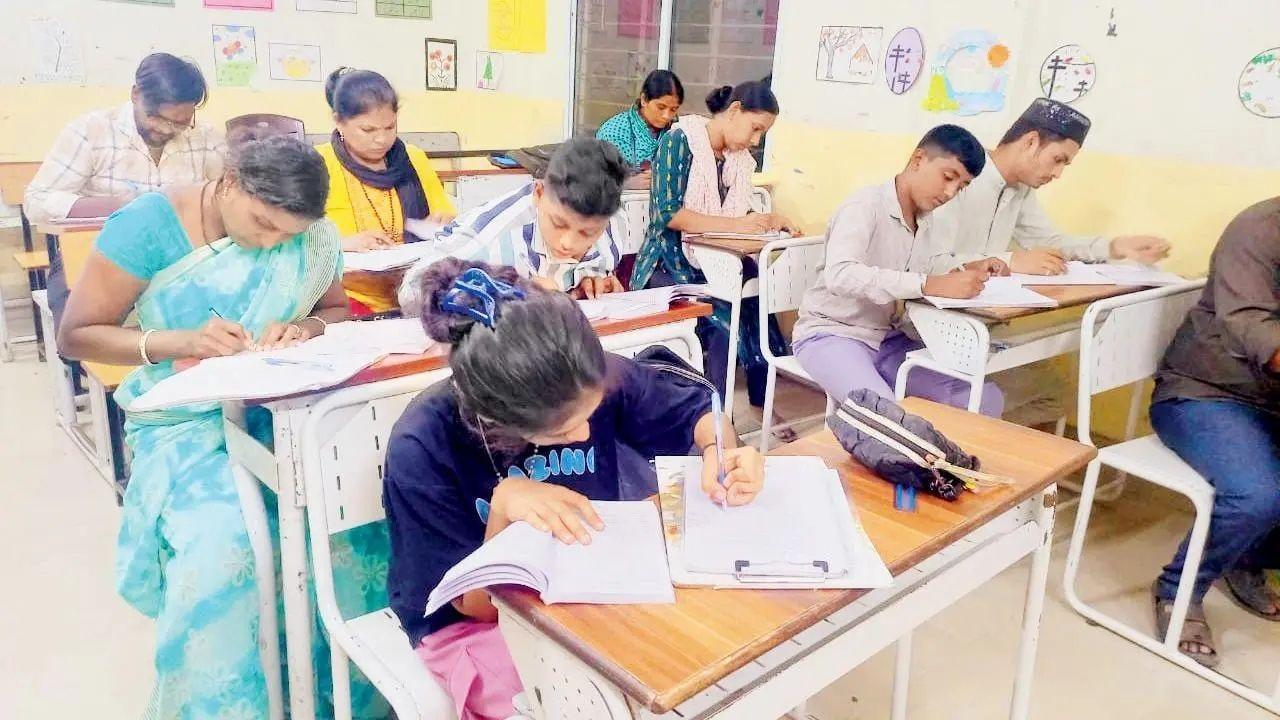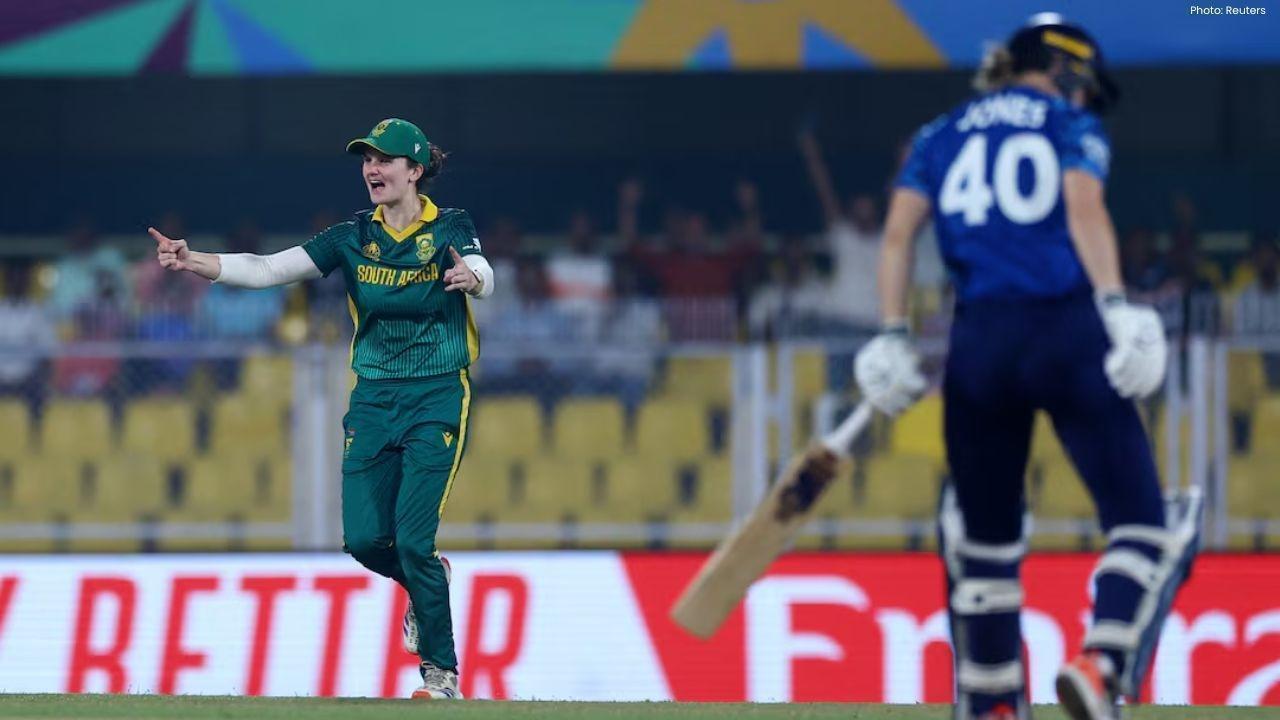
Join 10k+ people to get notified about new posts, news and tips.
Do not worry we don't spam!

Post by : Anis Farhan
The 2025 ICC Women’s Cricket World Cup proved to be a rollercoaster for the Indian women’s cricket team. Coming into the tournament, expectations were high, but so was the pressure. Over the years, the team had come close to glory on several occasions, only to fall just short. The semi-final and final stages had been especially challenging, leaving fans both hopeful and anxious.
India’s campaign began with mixed results. Early defeats in three of their initial matches raised questions about the team’s form and resilience. However, the players demonstrated remarkable mental strength and determination, gradually finding their rhythm as the tournament progressed. Each victory following the initial setbacks became a building block, boosting confidence and momentum.
On November 2, 2025, the stage was set at the Dr DY Patil Stadium in Navi Mumbai, with India facing South Africa in the much-anticipated final. South Africa, too, was chasing its first-ever World Cup title, making the contest even more thrilling. The packed stadium reflected the country’s growing interest in women’s cricket and the significance of the occasion.
Winning the toss, India opted to bat first—a decision that would define the match. The openers started aggressively, immediately putting pressure on the South African bowlers. Shafali Verma, known for her fearless batting, anchored the innings with a commanding 87 runs off 78 balls. Her ability to combine aggression with control set the tone for the team, giving them a strong start.
Her opening partner, Smriti Mandhana, complemented the attack with a steady 45 runs, helping establish a partnership of 104 runs. This foundation allowed India to build momentum, with both players rotating the strike effectively and finding boundaries at crucial moments.
As the innings progressed, Deepti Sharma emerged as a stabilizing force. Her 58-run contribution came at a critical juncture when India’s middle order experienced brief instability. By maintaining composure and punishing loose deliveries, Sharma ensured that India finished strongly, posting a total of 298 for seven in their allotted 50 overs. This was one of the highest-ever totals in a Women’s World Cup final and immediately placed India in a commanding position.
Chasing a target of 299, South Africa began their innings with determination. Their captain, Laura Wolvaardt, led by example, scoring a century of 101 runs. Wolvaardt’s innings was technically brilliant, marked by elegant stroke play and strategic shot selection, keeping South Africa within reach of the target.
However, the game-changing moment came from India’s bowlers. Deepti Sharma delivered a remarkable spell, taking five crucial wickets for just 39 runs. Her accuracy, variation, and ability to read the batsmen turned the match in India’s favour. From a promising position at 220 for six, South Africa experienced a dramatic collapse, being bowled out for 246 in 45.3 overs. India emerged victorious by a margin of 52 runs, claiming their first-ever Women’s Cricket World Cup title.
Several players’ performances were instrumental in India’s historic victory:
Shafali Verma: 87 runs and two wickets, providing the team with a blazing start and all-round contribution.
Deepti Sharma: Five wickets in the final, alongside consistent performances throughout the tournament, earning her the Player of the Tournament accolade.
Smriti Mandhana: A solid 45-run contribution, forming the backbone of India’s opening partnership.
Laura Wolvaardt (South Africa): Despite the loss, her century highlighted her class and consistency, finishing the tournament as the leading run-scorer with 571 runs.
These performances reflected not just talent, but preparation, mental strength, and the ability to thrive under pressure.
India’s victory was historic on multiple levels. It marked the team’s first Women’s ODI World Cup title, ending decades of near misses. The win was widely regarded as a turning point for women’s cricket in India, akin to the men’s team triumph in the 1983 Cricket World Cup in terms of national impact.
The victory also highlighted the increasing competitiveness of women’s cricket. Traditional powerhouses like Australia, England, and New Zealand had dominated for years, but the rise of teams like India and South Africa demonstrates the shifting dynamics of the sport.
Beyond the scoreboard, the win had profound social and cultural significance. A packed home crowd witnessed the final, showcasing the growing popularity and recognition of women’s cricket in India. The victory inspired countless young girls across the nation, showing that international success was not only possible but achievable.
India’s path to the trophy was anything but smooth. Early losses could have derailed the campaign, but the team’s resilience and strategic adjustments turned the tide.
The semi-final against Australia was particularly memorable. Facing a seven-time champion, India executed a well-planned chase, highlighting their ability to perform in high-pressure situations. These experiences underscored the team’s growth, tactical acumen, and mental fortitude.
Challenges extended beyond the field as well. The players had to balance high expectations, media scrutiny, and the pressure of representing a cricket-loving nation. Their composure under such circumstances added to the significance of the final victory.
The 2025 World Cup victory is likely to have far-reaching effects on women’s cricket in India. Increased attention from sponsors, investment in grassroots programs, and enhanced infrastructure for training and competition are expected to follow.
Young girls now have real role models to emulate, demonstrating that cricket is not only a viable career path but also a platform for international recognition. The visibility of women’s cricket will continue to grow, encouraging more participation at the local and national levels.
Domestic leagues are likely to expand, providing regular competitive exposure to emerging players. The professionalization of women’s cricket in India is set to accelerate, narrowing the gap with international standards and creating a sustainable pipeline of talent.
India’s triumph also has implications for women’s cricket worldwide. The sport is witnessing a democratization of talent, with traditional powerhouses facing increased competition from emerging teams. This ensures that tournaments are more competitive, exciting, and unpredictable.
Television viewership and digital engagement for women’s cricket are expected to rise, attracting global sponsors and media attention. This visibility not only benefits players financially but also helps in promoting gender equality in sports, inspiring more women to pursue competitive cricket.
The World Cup showcased the growing professionalism and strategic depth in women’s cricket. Teams now focus on all-round capabilities, tactical planning, fitness, and mental conditioning, reflecting the sport’s evolution toward parity with men’s cricket.
While the victory is historic, sustaining success presents its own challenges. The Indian team must remain vigilant against complacency. Competitors will study India’s strategies, prompting innovation and continuous improvement.
Investment in coaching, talent identification, and exposure to high-level international cricket will be crucial. Building strong domestic structures and nurturing young talent will ensure India’s continued presence at the top of women’s cricket.
Globally, the sport must maintain competitive balance and enhance its commercial and media profile. Encouraging more countries to participate and perform at high standards will elevate the sport further, ensuring that victories like India’s World Cup triumph are part of a broader narrative of growth and excellence in women’s cricket.
The night of November 2, 2025, will forever remain etched in the memories of Indian cricket fans. India’s 52-run victory over South Africa in the Women’s Cricket World Cup final marked a historic milestone for the team and for the sport.
This triumph signifies more than just a trophy. It represents resilience, skill, and determination built over years of preparation and near misses. The players’ performances have inspired a new generation, elevated the profile of women’s cricket, and highlighted the sport’s global evolution.
As the Indian team lifted the trophy under the stadium lights, they not only celebrated a historic win but also opened a new chapter for women’s cricket. Dreams once considered distant now feel achievable, and the legacy of this team will inspire countless young athletes for generations to come.
This article is intended for informational purposes only. It does not represent the views of any cricket board, team, or sponsor and should not be interpreted as an endorsement of any player, organization, or commercial entity










India Wins First Women’s World Cup 2025 Title
India lifts its maiden Women’s World Cup 2025 title! Harmanpreet Kaur’s team stuns South Africa in a

Manuel Frederick, 1972 Olympic Bronze Goalkeeper, Dies at 78
Manuel Frederick, a member of India’s 1972 Olympic bronze hockey team, has died in Bengaluru at 78 a

Muhammad Hamza Raja Wins IFBB Pro Card Puts Pakistan & UAE on Global Stage
Pakistani bodybuilder Muhammad Hamza Raja earns IFBB Pro Card in Czech Republic, showcasing Dubai’s

Shreyas Iyer’s Recovery Underway After Spleen Laceration in Sydney ODI
Shreyas Iyer is recovering after a spleen laceration sustained while taking a catch in the Sydney OD

Qatar Ready to Host FIFA U-17 World Cup 2025 in Aspire
Qatar confirms full readiness to host the FIFA U-17 World Cup 2025 from November 3–27, with world-cl

Wolvaardt’s 169 Sends South Africa Into Women’s World Cup Final
Laura Wolvaardt’s 169 powered South Africa to a 125-run semi-final win over England, booking a place